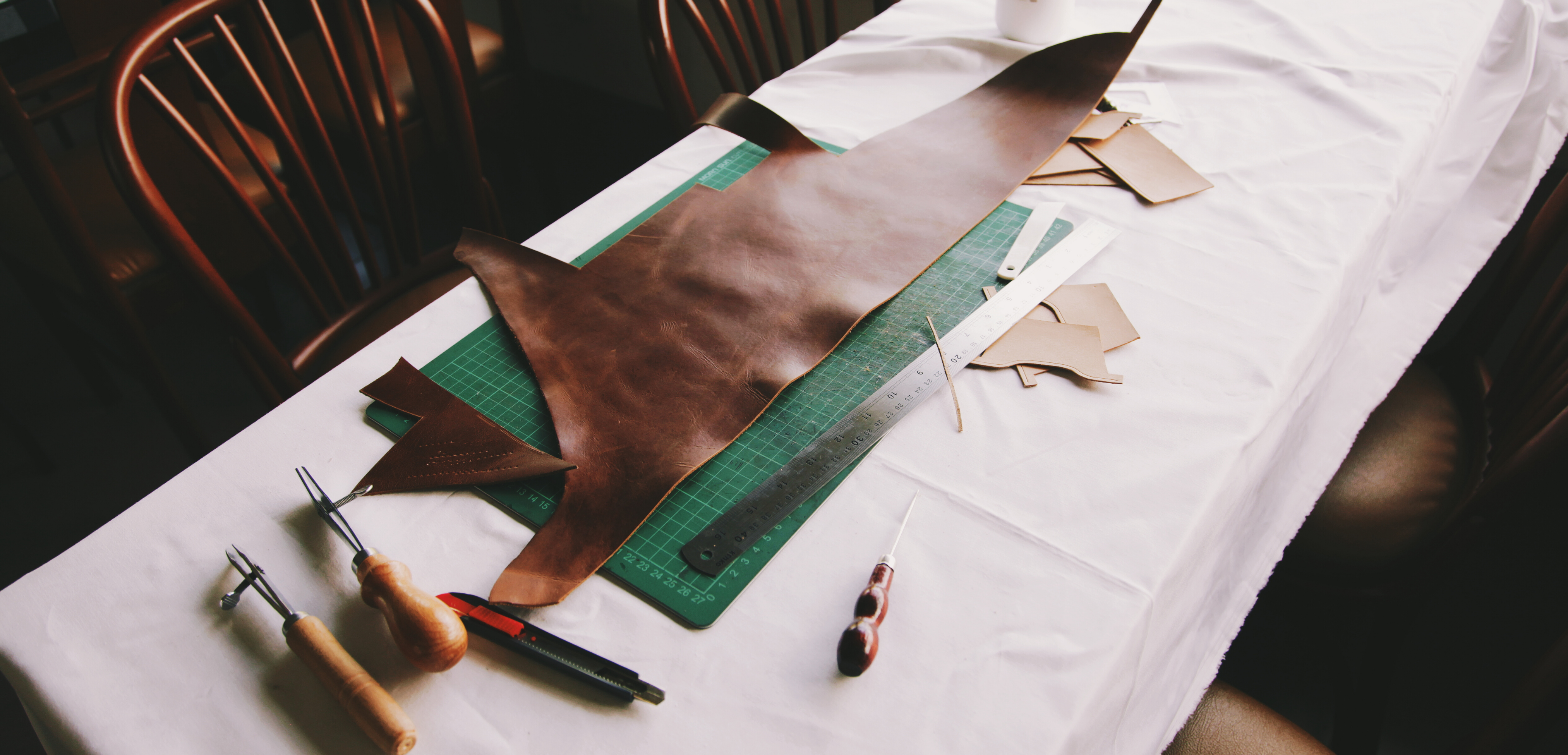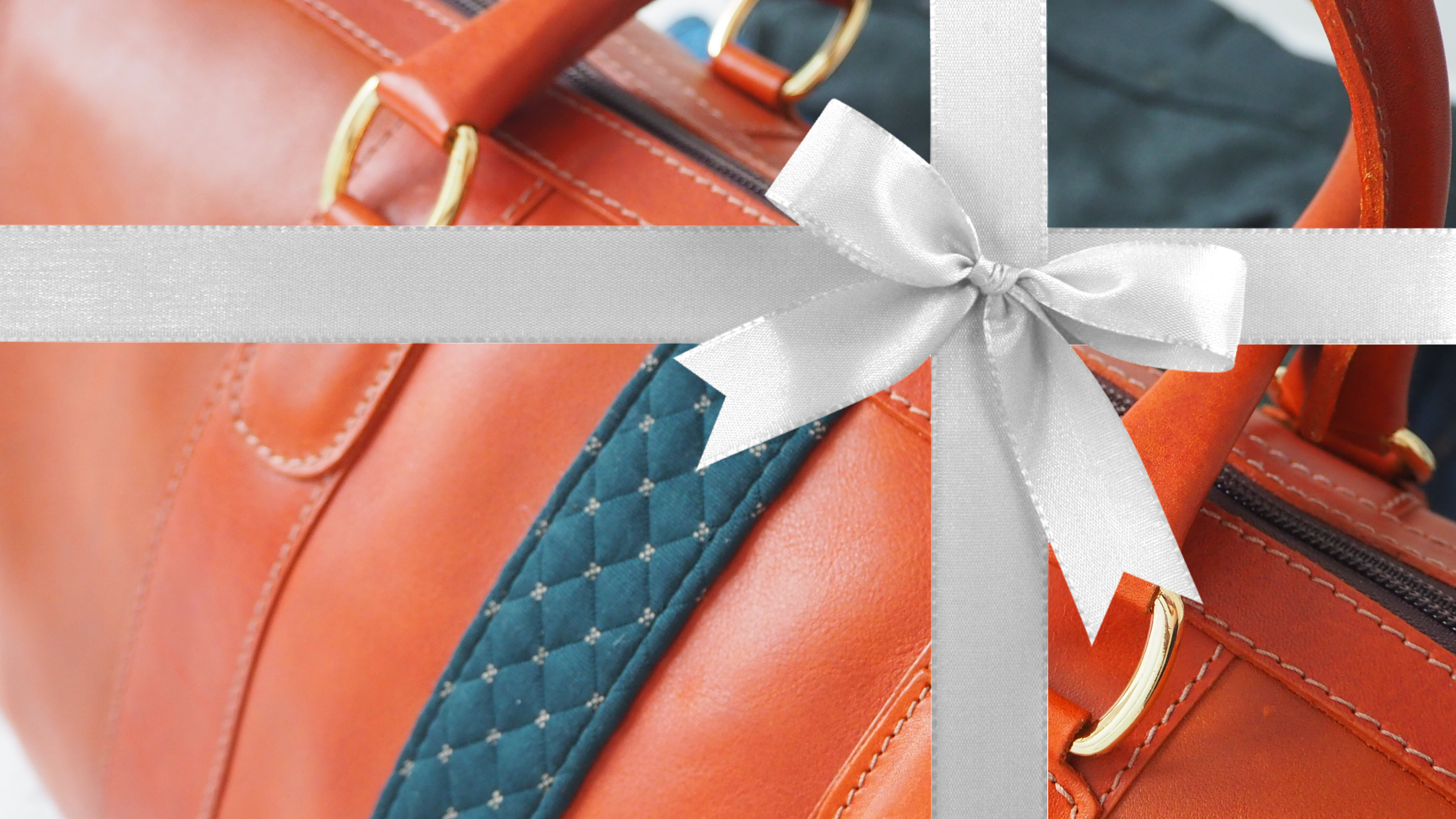
Leather 101: Vegetable Tanned Leather vs. Vegan Leather
 If you’re new to Monte & Coe and this is the first time landing on our blog, then you should know that the raw materials we select for the construction of our products are second to none.
If you’re new to Monte & Coe and this is the first time landing on our blog, then you should know that the raw materials we select for the construction of our products are second to none.
At the core of our designs, we focus on the use of sustainable, animal-friendly Italian wool, which we compliment with chemical-free vegetable-tanned leather and Italian brass hardware.
We get a lot of questions surrounding vegetable-tanned leather and oftentimes it is easily mistaken with “vegan leather” which is thought to be a more sustainable, alternative to leather.
Is this true?
WHAT IS VEGETABLE TANNED LEATHER?
The vegetable tanning process is one of the oldest and most natural ways of tanning leather using organic materials like tree bark and other natural vegetation.
This method is a traditional craft dating back thousands of years. It is a lengthier and more costly way of tanning and thus less than 10% of the world’s leather is vegetable tanned. It takes nearly 70 days to properly tan a hide using the veg tan process.
Treating leather this way makes it more sustainable and eco-friendly than any other method of leather tanning.
 In comparison, the more common way of tanning leather is called chrome-tanning which uses a harmful chemical called chromium, along with other acids.
In comparison, the more common way of tanning leather is called chrome-tanning which uses a harmful chemical called chromium, along with other acids.
Chrome Tanning is both detrimental to the environment due to the runoff of harmful fluids post-completion, as it is to the people who facilitate the process, breathing in harmful vapours.
Aesthetically, vegetable tanning allows your products to develop a rich patina over time, making your Monte & Coe weekender bags and other travel essentials truly unique to you based on usage.
Vegetable-tanned leather is also biodegradable.

WHAT IS VEGAN LEATHER OF?
In recent years Vegan leather has grown in popularity due to the valued philosophy of sustainability.
Naturally, the growth in the Vegan movement caught our attention.
As a brand with an ethos of making morally responsible decisions, we were curious about the sustainable qualities of vegan leather.
In our efforts to become as sustainable and eco-conscious as possible we did some investigating.
 So naturally, we googled “What is Vegan leather?”
So naturally, we googled “What is Vegan leather?”
Google told us this:
Vegan leather and faux leather are the same things – essentially a fake 'leather' material that does not use animal skin.
I thought to myself, “if they don’t use animal hides, then how is vegan leather made?
We started researching and what I found was a little bit surprising...
The fabrication of vegan leather is most commonly produced using two synthetic materials called polyvinyl chloride (PVC) and polyurethane (PU), both plastic-based materials.
These synthetic materials are more abundant and readily available to the market, explaining why vegan leather products are lower-priced compared to their vegetable tanned leather counterparts.
 The natural grain of vegetable tanned leather vs Bonded & PU via BTOD
The natural grain of vegetable tanned leather vs Bonded & PU via BTOD
“Most vegan leather you come across while shopping will be synthetic leather derived from these ingredients,” says Anika Kozlowski, an assistant professor of Fashion Design, Ethics & Sustainability in the School of Fashion at Ryerson University. (via FLARE Magazine)
In an industry that is still vastly unregulated and ambiguous when it comes to guidelines for creating faux materials, many questions have been raised with regard to the environmental impact of using PU and PVC.
Unlike leather goods, products made using PU and PVC are non-recyclable, nor are they biodegradable.
 via WanaBana
via WanaBana
“Eventually, items made from PU and PVC just get smaller and smaller until you get microplastic” explains Kozlowski. (via FLARE Magazine)
"The problem with microplastics is that they break down and end up in everything from our oceans where it is ingested by marine life to the water we drink” (via FLARE Magazine)
The emergence of innovative plant-based leathers like apple, pineapple and mushrooms present a great solution, however, PU can still be found in the fabrication of these faux leathers.
Not to mention, in many cases, plant-based leathers do not have the same durability and longevity as vegetable-tanned leather products.
It begs the question…”Why buy Vegan products?”
WHY BUY VEGAN PRODUCTS?
The one benefit that Vegan leather does have in its corner when compared to real leather, is the animal-free component, right?
Maybe not.
Before I continue, let it be known that in no way, shape, or form, do we at Monte & Coe support cruelty or mistreatment of any living creature.
Vegan supporters in the consumer market believe just that...that animals are unjustly harmed to satisfy consumer demand for leather in the mass market.
With regards to exotic leathers, we can not dispute that this is untrue and absolutely disagree with harming helpless animals for the purposes of selling scarce leathers and other animal products with above-market price tags.
However, we live in a society that consumes a tremendous amount of animal protein, specifically from cows, which has adverse effects on our environment, including deforestation - which is why we plant trees for every product ordered from us - among other downstream impacts.
However, the sale of animal hides for the creation of leather products can actually be more of a solution to this overconsumption, mainly as a waste management tool.
Let us explain...
Leather hides are a by-product of the overserved meat market. In fact, leather hides come from animals used to service the demands of the meat industry, not the other way around.
The result of the growing popularity of “Vegan” products has resulted in piles of cowhides unused and unsold all over the world. Many of these unutilized hides end up in landfills.
In an article in the Los Angeles Times, Joe Branna of Twin City Hides mentions with regards to the emergence of Vegan products, that “we’re throwing a natural product in the garbage” referring to the unused animal hides that end up in landfills across the globe. (via LA Times)
These hides turn putrid, and, like any exposed animal product, can result in dangerous animal bacteria and viruses, especially in less developed places that live in proximity to these landfills.
It begs the question, “What would be done with animal hides if leather falls out of favor in the market at scale?
Perhaps we would have an entirely new environmental issue on our hands.
THE VERDICT

Quality and durability are at the core of what we do at Monte & Coe.
We choose vegetable tanned leather for the creation of all of our products, from weekender bags to dopp kits, because the leather is full-grain, meaning the thickest and most durable.
Leather has been around for thousands of years and good quality leather will last the test of time.
The production of vegetable-tanned leather is chemical-free, which makes vegetable tanned leather hides biodegradable.
The verdict is still out on the durability of Vegan leather given its newness.
What we do know is that Vegan or Faux leather is substantially thinner and lighter compared to full-grain vegetable-tanned leather, and when considering what material you prefer in your weekender bags, it’s important to realize that thinner and lightweight can be synonymous with less durable.
Less durable can mean a much shorter lifespan, meaning they will likely end up in a landfill much sooner than their leather counterpart, meaning more of a burden on the environment.
While the initial upfront cost of a Vegan leather weekender bag might be lower, in the long run, purchasing Vegan leather products more often makes them much less-cost effective.
Synthetic leathers also wear out very unattractively whereas real leather ages over time and form a patina, which we mentioned above!
At the end of the day, it all comes down to personal preference. However, it’s important to know that Vegan leather isn’t necessarily what it’s made out to be...at least for now.
If you like what you learned about vegetable tanned leather check out our collection of weekender bags and travel essentials.





Leave a comment
This site is protected by hCaptcha and the hCaptcha Privacy Policy and Terms of Service apply.